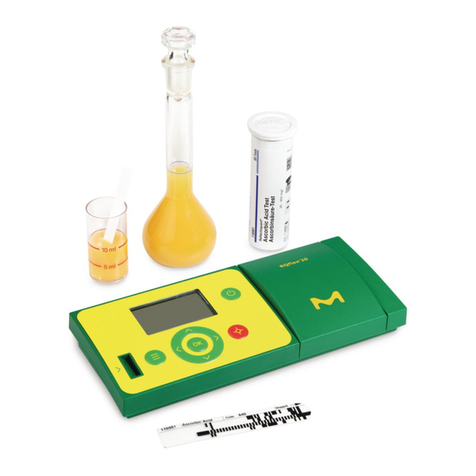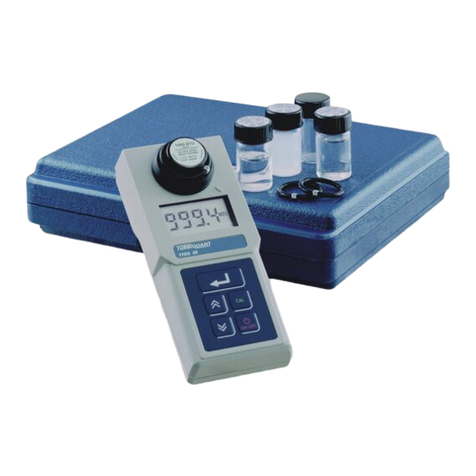
Version 2.0 – 08/2018
2
4
5
3
2
1
Contents
1 Safety ........................................................................ 3
1.1 Intended use........................................................................................................... 3
2 Overview ................................................................... 4
2.1 Scope of delivery ..................................................................................................... 4
2.2 Overview of the instrument ....................................................................................... 4
2.3 Display and user interface......................................................................................... 5
3 Getting started ........................................................ 11
3.1 General notes on handling....................................................................................... 11
3.2 Initial setup .......................................................................................................... 11
3.2.1 Connecting the power supply .......................................................................... 11
3.2.2 First power-on .............................................................................................. 12
3.2.3 Language setup ............................................................................................ 13
3.2.4 Date,timeandcountry-specicsettings ........................................................... 13
3.2.5 Self-test....................................................................................................... 14
4 Operation................................................................. 15
4.1 Switchingthespectrophotometeronoro ................................................................ 15
4.2 System setup ....................................................................................................... 17
4.3 Zero adjustment for preprogrammed methods ........................................................... 18
4.3.1 Notes on zero adjustment .............................................................................. 19
4.3.2 When to repeat the zero adjustment? .............................................................. 19
4.4 Measurements....................................................................................................... 20
4.4.1 Performing a measurement............................................................................. 21
5 Appendix ................................................................. 23
5.1 Certicates ........................................................................................................... 23
5.2 Warranty .............................................................................................................. 24
5.3 Accessories ........................................................................................................... 25
For more information about the Spectroquant®Prove
please visit:
www.sigmaaldrich.com/spectroquant
For our Operating Manual please visit:
www.sigmaaldrich.com/spectroquant
For more information about the technical videos please
visit:
www.sigmaaldrich.com/photometry





























